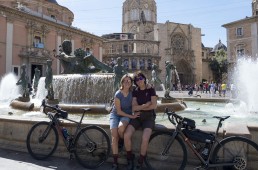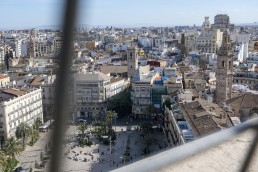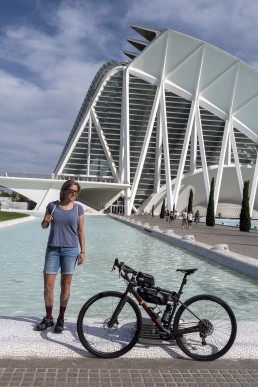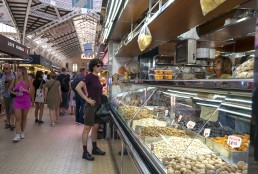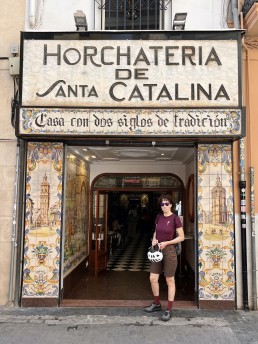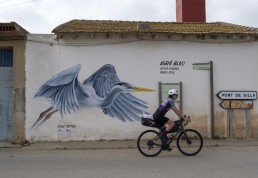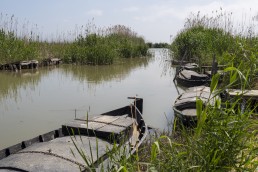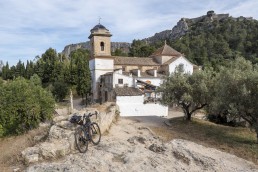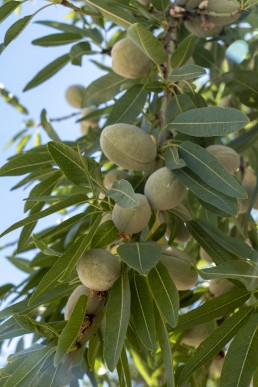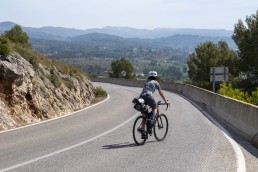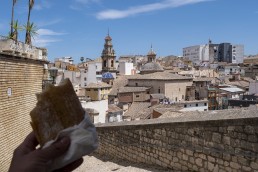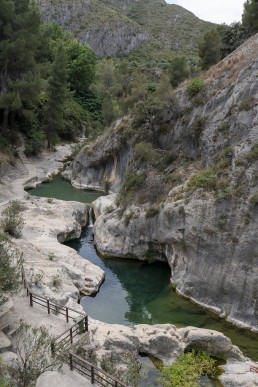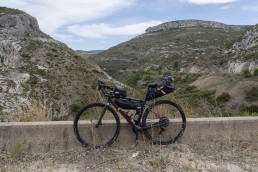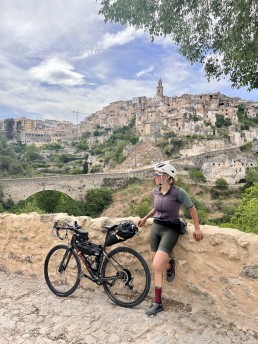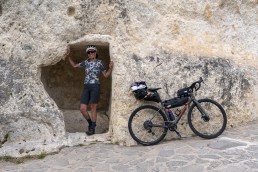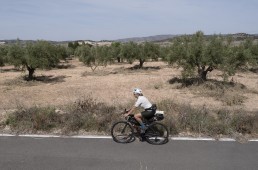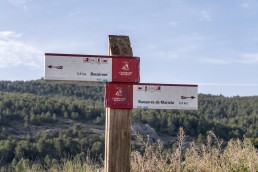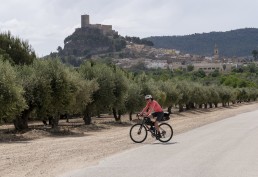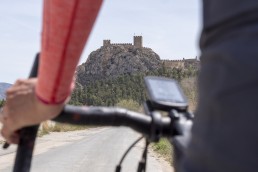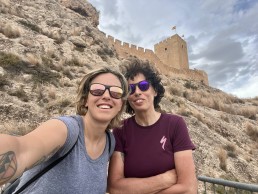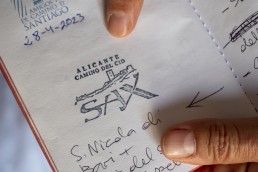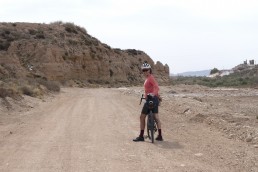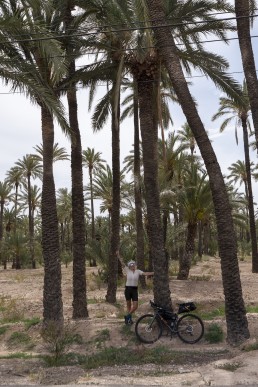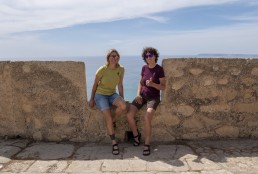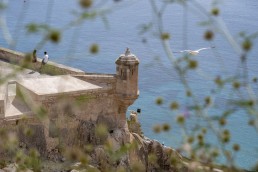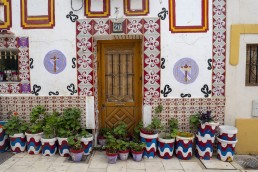Cid Campeador, or Rodrigo Díaz de Vivar, was a medieval leader and knight, a legendary figure of the Spanish Reconquista, whose adventures are narrated in a famous 12th century Castilian poem: Cantar de Mío Cid.
His adventures can be relived today by cycling or walking the Camino del Cid from Burgos to Orihuela (Alicante). A touristic/cultural route made up of approximately 2.000 km of paved roads and 1.400 km of marked trails.
We cycled the last stretch, the defence of the south, from Valencia to Alicante, to discover the castles and fortresses raised by Cid to defend the territory conquered in Valencia from Almoravid attacks. Further down on this page, you will find our travel tips, for more info on the complete itinerary, visit the official website. Have fun, and don’t forget to collect the official stamps along the way!
DAY 1 VALENCIA: 20km
We dedicated the first day and a half (we landed in the early afternoon), entirely to Valencia, even if it would take more time to visit well the city. It’s a super bike-friendly city, perfect to be discovered cycling. Start from the narrow streets of the historic center, visit the Lonja, the Valencian Sistine Chapel in the church of San Nicola, the Mercado Central, the Cathedral – where is located the Holy Grail – and climb the Miguelete tower. Then ride along the old bed of Turia river, now a beautiful park and cycle path, to Calatrava’s City of Arts and Sciences. Finally, head to the sea for some relax on the beach and a arroz a banda at Restaurante Balandret. We stayed at Hotel Olympia Valencia, it’s a little out of the centre, but it’s a well-equipped bike hotel and also well served by public transport. We recommend an aperitif or tapas-based dinner at the characteristic Mercado Colón.
DAY 2 VALENCIA/XÀTIVA: 75km, 400m D+
The first stop it’s at Albufera Natural Park, a large lake surrounded by rice paddies and woods. We recommend a stop at the picturesque Port of Silla, if you have time have a paella, which was invented right in the Albufera. You’ll ride through endless citrus groves to the fortified city of Xàtiva. We advise you to dine and stay overnight at Montsant Hotel, located below the castle and with a beautiful view of the city, simply stunning!
DAY 3 XÀTIVA/BOCAIRENT: 50km, 990m D+
The most challenging stage of the tour, that will take you first to Ontinyent, riding through almond trees, then to beautiful Bocairent via the picturesque Pou Clar gorge. This last stretch is on a fairly busy road, but the landscape in the middle of the mountains is truly beautiful. In Bocairent, don’t miss a walk to discover the suggestive village and the Covetes del Moros, Moorish caves dating back hundreds of years. We recommend staying overnight in the heart of the old city in the new Abbi Suites and dining at l’Estació.
DAY 4 BOCAIRENT/SAX: 51km, 430m D+
Today we enter the province of Alicante: a short stage, but with lots of things to see. You ride almost entirely on a cycle paths, including the beautiful Vía Verde del Xixarra up to Villena, skirting the Sierra de Mariola. It’s difficult to go wrong, but Camino del Cid is also very well signposted. Unmissable stops at the castles of Banyeres de Mariola and Bias, and of course a visit to the castle of Sax, where we stop for the night. Dinner and overnight at Hotel Fuente El Cura.
DAY 5 SAX/ALICANTE: 71km, 340m D+
This last stage of Camino del Cid gives us long stretches of gravel and make us discover Elche, a pretty town with a Moorish past famous for the Lady of Elche, a stone bust of mysterious origins, and its thousand-year-old palm grove. It’s the largest palm grove in Europe, also declared a UNESCO World Heritage Site. From here the Camino would proceed in the direction of Orihuela, but we instead follow EuroVelo 8 to Alicante. The last 25km are not exciting, because they always run along the highway, but they are a great example of how all cycle paths should be made! Night at Hotel Eurostars Lucentum (very convenient location) and excellent dinner at Probar el Buen Bar, which we highly recommend.
DAY 6 ALICANTE
Before catching our afternoon flight, we have time to discover Alicante. The Mercado Central, the Church of Santa Maria, the Explanada de Espana, the beach and of course the Castle of Santa Barbara, the largest medieval fortress in Spain, which dominates the city from the top of a hill overlooking the sea. We were lucky because we came across the Las Cruces de Mayo festival, and we were welcomed by Barrio Santa Cruz, the small and charming old city, with lots of flower crosses and lots of music.

